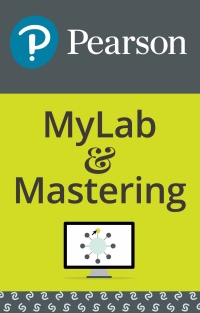21 This exercise is required in order to do the RSA encryption Problems 22 or 23. Using Sage's NextPrime command, find two large prime numbers Interactive Problems and 4, at least 80 digits each. The digits should be random enough so tha no one can spot a pattern. This is done by the two commands p = NextPrime( large number goes here ); p q = NextPrime ( another large number goes here ); 4 We will use the value r = 10007. Verify that this number is coprime top-1 and q- 1 by executing the following: gcd( (p - 1)*(q - 1), 10007) If this yields 10007 instead of 1, go back and find new values for p and q. Once the GCD is 1, compute n=p.4, and save this to a file. To do this, enter n = p*q; print 'n=', n If the output is continued over several lines using backslashes, clicking on the left side of the output will convert it to a single line output. This line can then be copied and pasted into a text file, using a text editor such as Notepad or TextEditor. If you are using VirtualBox, make sure that the shared clipboard is set to "Bidirectional" in the Settings - General - Advanced tab. Note: b Mathematica, the commands are different. See the Mathematica notebooks for the correct commands. Next, find the secret number s, which deciphers a message: s = PowerMod (10007, -1, (p - 1)*(q - 1)) You will need to save this number for future reference. Enter print 's=', s and copy and paste the single line version output to the same text file. Save this file with a name of your choice. Finally, copy and paste just the n number into the body of an e-mail mes- sage, sent to the professor. Do not send the value of the secret numbers, but save it for a future exercise. 21 This exercise is required in order to do the RSA encryption Problems 22 or 23. Using Sage's NextPrime command, find two large prime numbers Interactive Problems and 4, at least 80 digits each. The digits should be random enough so tha no one can spot a pattern. This is done by the two commands p = NextPrime( large number goes here ); p q = NextPrime ( another large number goes here ); 4 We will use the value r = 10007. Verify that this number is coprime top-1 and q- 1 by executing the following: gcd( (p - 1)*(q - 1), 10007) If this yields 10007 instead of 1, go back and find new values for p and q. Once the GCD is 1, compute n=p.4, and save this to a file. To do this, enter n = p*q; print 'n=', n If the output is continued over several lines using backslashes, clicking on the left side of the output will convert it to a single line output. This line can then be copied and pasted into a text file, using a text editor such as Notepad or TextEditor. If you are using VirtualBox, make sure that the shared clipboard is set to "Bidirectional" in the Settings - General - Advanced tab. Note: b Mathematica, the commands are different. See the Mathematica notebooks for the correct commands. Next, find the secret number s, which deciphers a message: s = PowerMod (10007, -1, (p - 1)*(q - 1)) You will need to save this number for future reference. Enter print 's=', s and copy and paste the single line version output to the same text file. Save this file with a name of your choice. Finally, copy and paste just the n number into the body of an e-mail mes- sage, sent to the professor. Do not send the value of the secret numbers, but save it for a future exercise








